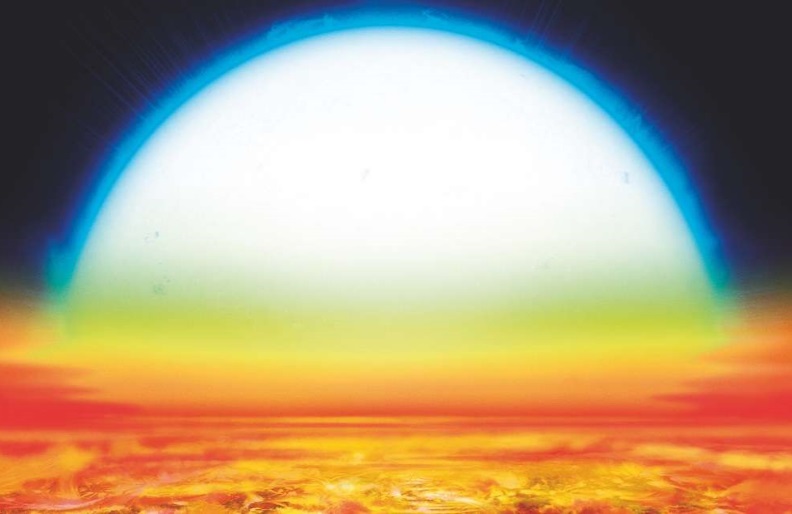If planets come any hotter than KELT-9b we’re yet to find them. Not only does this roasted ball of gas win first prize for scorching temperatures, it can now claim to be the first planet known to have free-roaming atoms of iron and titanium in its atmosphere.
To most of us, the discovery is just one more extreme place we’ll never visit in our galaxy. For astronomers keen on coming up with better ways to study planets outside our Solar System, the find could have some useful applications.
A team of researchers from across Europe used data from the High Accuracy Radial velocity Planet Searcher for the Northern hemisphere (HARPS-N) spectrograph in the Canary Islands to pick out elements in the planet’s atmosphere.
Astronomers first published data on KELT-9b’s temperature last year, estimating it to be up around 4,600° Kelvin (about 4,300° Celsius, or 7,800° Fahrenheit).
By comparison, our own Sun’s surface is just under 6,000° Celsius, or around 10,000° Fahrenheit. So we’re talking a spicy space meatball.
KELT-9b’s unusual heat comes courtesy of a rather intimate relationship with its parent star, HD 195689 (or KELT-9 for short) – a star with a little over twice the mass of our Sun roughly 620 lightyears away.
There’s no easy way to tell exactly how close the two objects are, but KELT-9b, which is roughly double the size of Jupiter, can complete a lap in just under 36 hours, so the distance can’t be huge.
Initial observations have suggested the exoplanet has an atmosphere made up mostly of hydrogen. But to really get a sense of the planet’s character, it’s important to detect fingerprints of other elements.
With such a high average temperature, researchers theorised that common transitory metals such as iron could appear in the atmosphere as both charged and free-roaming atoms.
Temperatures that vaporise metals aren’t unknown among exoplanets. The ‘hot Jupiter’ WASP-12b is thought to have a surface temperature of roughly 2,000° Celsius (about 3,600° Fahrenheit), boiling aluminium and titanium into clouds.
But KELT-9b has that beat, being hot enough to prevent condensates from forming – which means it could have cloud-free skies dusted with metallic vapour.
The research team used emission spectroscopy to look for signs of iron and titanium in recordings made of KELT-9b with HARPS-N last year, and have now reported that the planet’s atmosphere contains both in ionic and neutral forms.
While we can be fairly certain the elements are present, their exact proportions remain a mystery. Analysis requires a set of standards to take into account the effect of our own atmosphere on the spectrum, something we still don’t have.
Fortunately discoveries like this one are just what we need to develop better tools for interpreting the spectral emissions from exoplanets.
Right now researchers are forced to rely on certain assumptions about the mixes of materials making up distant planets. That’s not necessarily a bad thing, but comes at a cost of precision.
Fixing the proportions of key elements will lead to better methods for classifying distant worlds and pulling apart their ingredient lists in detail.
And that’s the best we have right now; even if we do manage to send probes out to nearby stars, our ability to get up close and personal with a multitude of distant worlds any time soon is pretty much zip.
So if we want to study the ever-growing list of planets we’re discovering, we’re limited to pulling as much detail as we can from the faint glow of light spilling from their surfaces.
We might not ever want to go to KELT-9b. But its iron skies are just the ticket we need to access knowledge about the rest of the Universe.
This research was published in Nature.

